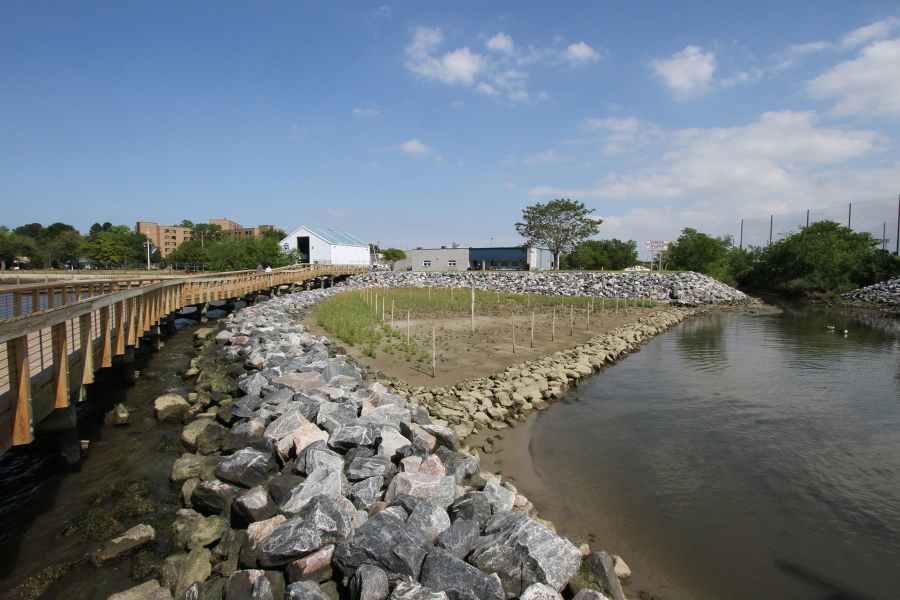Elizabeth River earns a "C" on latest report card
Community restoration projects have aided in the recovery of this historically polluted waterway.

Researchers have measured marked improvements in the health of the Elizabeth River – most notably in the “notoriously polluted” Southern Branch – earning the waterway an overall “C” in the latest State of the Elizabeth River report.
The report, compiled by a team of scientists convened by the Virginia Department of Environmental Quality and the Elizabeth River Project, evaluates river health by using bacteria levels, algae, dissolved oxygen, diversity of bottom-dwelling species, nutrient concentrations and the presence of chemical contaminants such as polycyclic aromatic hydrocarbons (PAHs) and polychlorinated biphenyls (PCBs).
Improvements in river health are due in part to local restoration efforts, including establishing wetlands, building oyster reefs, and dredging contaminated sediment. Between 2009 and 2013, the Elizabeth River Project helped to remove more than 36 million pounds of sediment contaminated with PAHs – a legacy of four wood treatment facilities once situated on the shore – from the river bottom near Money Point, a peninsula on the Southern Branch of the waterway. Since then, the report states, cancer rates in mummichog fish have declined six-fold, and the number of fish species observed in the area has risen from four to twenty-six.
Despite significant progress in many regions of the waterway, much remains to be done. According to the report, upcoming river recovery projects will focus on the Eastern Branch, where the Broad Creek and Indian River tributaries both received “F” grades, and on reducing the high levels of PCBs found in fish and shellfish throughout the river.

Comments
There are no comments.
Thank you!
Your comment has been received. Before it can be published, the comment will be reviewed by our team to ensure it adheres with our rules of engagement.
Back to recent stories